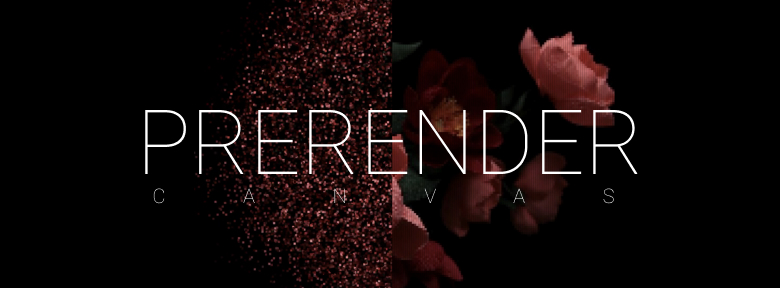In attempts to optimize the 2D animation created in canvas, one interesting option was found.

Preliminary visualization - prerender.
"And what if you record all the frames in advance and show them after the end of the animation?" - We thought with a friend and that's what happened the next day.
Live demo
amedomary.ru/prerender-canvas
Code v1.0
The page itself is on Github .
The logic is very simple and is implemented in 2 steps:
Step 1 - Save each frame of our animation to an array of images
Step 1 - javascript code function renderLoop() {
draw();
canvasPrerender.toBlob(blob => {
const reader = new FileReader();
reader.readAsDataURL(blob);
reader.onload = function() {
const image = document.createElement("img");
image.src = reader.result;
prerenderArr.push(image);
};
});
if (prerenderIsCompleted) {
requestAnimationFrame(renderLoop);
} else {
requestAnimationFrame(drawPreImg);
}
}
2 — —
2 - javascript function drawPreImg() {
ctx.clearRect(0, 0, canvas.width, canvas.height);
ctx.drawImage(prerenderArr[i], 0, 0);
requestAnimationFrame(drawPreImg);
}
Analytic
. macbook 13 2019 .
.
FPS
Fps "" .
Fps "" (prerender): 14-22
Fps "" ( ): 58-60

, live demo.
Prerender — 9
— 3
— 12 ( live demo)
CPU / Performance
As can be seen from the screenshot below - our processor only suffers at the prerender stage. Draw ready-made images is not difficult.
Memory
For a small animation like ours, this whole thing takes:
~ 432/2 = 200 frames
~ 25 mb

Conclusion
If you have the opportunity to wait before showing the animation to the user and it will not eat up Gigabytes of memory - try to do something like that.
PS
If you have ideas on improving the performance of this approach - write :)